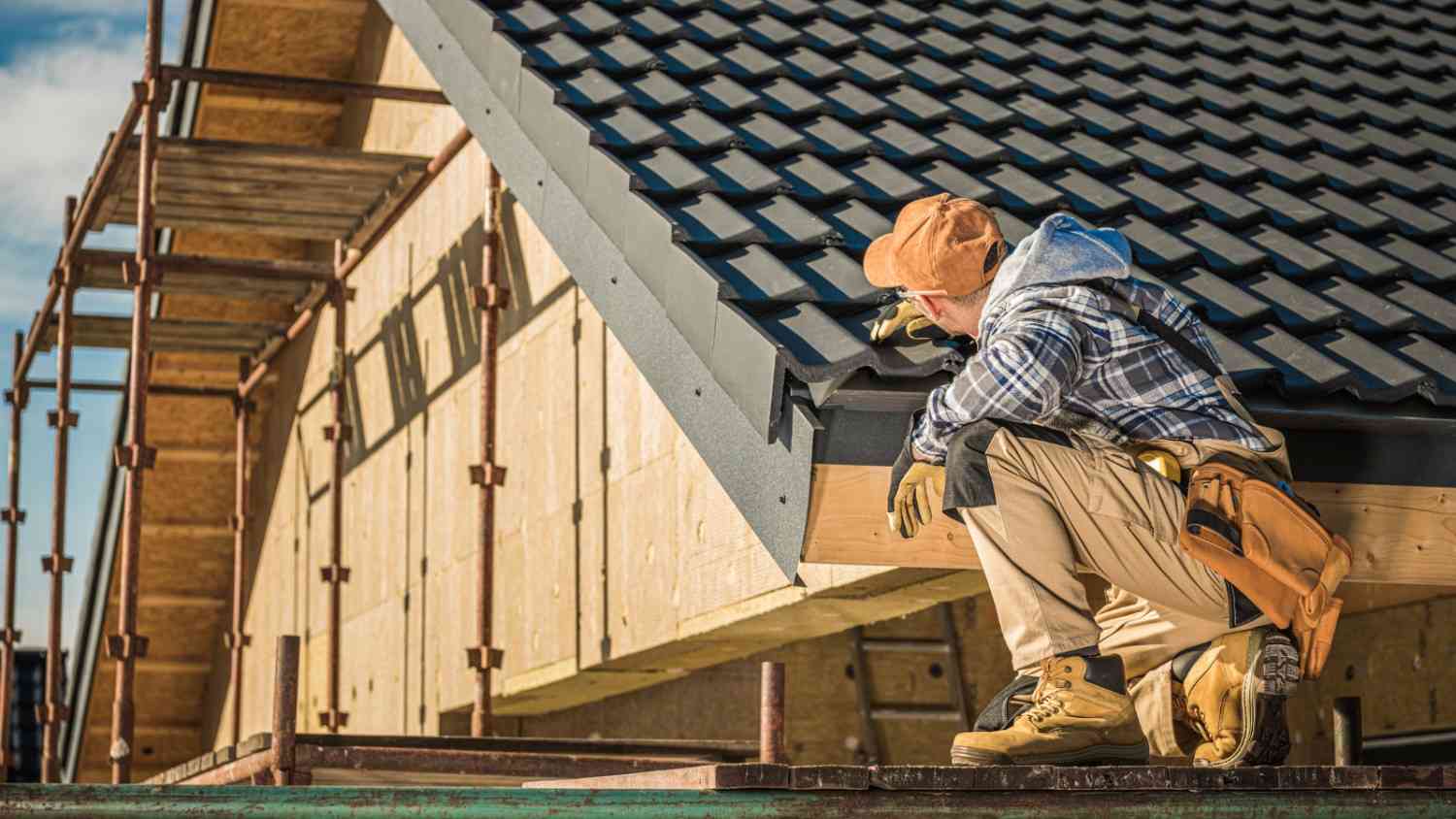Your roof deals with a lot more than just sun and rain. If you’ve ever noticed missing shingles after a storm, unexpected leaks in your ceiling, or mold creeping into the attic, weather is likely to blame.
Shifting seasons and unpredictable weather patterns create serious challenges for roof upkeep. And what’s sad is that most homeowners often react to damage after it happens instead of staying ahead of it. As such, we aim to provide guidance here.
This blog explores the impact of weather on roof maintenance. We’ll explain how each season affects your roofing system and what you can do to keep it in shape. Whether you’ve dealt with snow, heat waves, or heavy winds, understanding these effects is key.
We’ll also learn that if you’re looking for reliable protection and long-term durability, staying informed and investing in professional roof repair services matters more than ever.
What Is Roof Maintenance?
Roof maintenance means regularly checking and caring for your roof so it lasts longer and performs better. It’s not just about fixing visible damage. It involves routine inspections, minor repairs, debris removal, and making sure drainage works properly. Done right, it prevents minor issues from turning into big problems.
Key components of effective roof maintenance include:
- Checking for missing, loose, or damaged shingles
- Cleaning gutters and downspouts to avoid water buildup
- Inspecting flashing and seals around vents and chimneys
- Monitoring attic insulation and ventilation
- Looking for signs of water intrusion or mold
This kind of upkeep protects your home and saves you money. Ignoring routine maintenance leads to leaks, structural decay, and higher energy bills. That said, making roof maintenance a habit should be treated as an essential rather than a last resort. Doing small steps immediately will pay off later.
How Weather Impacts Your Roof Maintenance
Weather changes affect how your roof performs and how often it needs attention. Each season introduces different types of stress that require a specific approach to roof maintenance.
Let’s break down what that looks like across various weather conditions:
Winter Roof Damage: Snow, Ice Dams, and Freezing Effects
Winter is harsh on roofing materials. Heavy snow adds pressure, especially on older or already weakened structures. As temperatures drop, that snow melts during the day and refreezes at night.
This cycle creates ice dams along the roof’s edge. Water trapped behind the dam seeps under the shingles and causes hidden leaks. The freeze-thaw process also stresses seals and joints, making them prone to cracking.
If the attic lacks proper insulation, heat escapes and worsens ice dam formation. Moisture from melting snow may also enter poorly ventilated areas, leading to condensation and mold growth. Ignoring these issues risks rot, water damage, and structural weakening. Winter roof maintenance should focus on prevention, not just emergency fixes.
Rain and Moisture Problems: Leaks, Mold, and Rot
Rain may seem harmless, but repeated exposure without proper drainage will cause long-term damage. Even minor leaks allow water to enter the roof deck, insulation, and eventually the interior walls.
Over time, this moisture promotes mold, mildew, and rot in both wood and drywall. Poor flashing or clogged gutters are often the starting points. Understanding how to fix a leaking roof can help you address these issues before they worsen.
Some signs only appear after the damage is done. You may notice stains on the ceilings or a musty smell in the attic. By the time the leak becomes visible, there’s usually significant water saturation behind the scenes.
Proper roof slope, clean gutters, and tight seals are crucial defenses against moisture.
Wind Damage: Protecting Shingles and Flashing
Strong wind can rip off shingles, peel back flashing, and lift roof edges. Any spot where the wind finds a weak point becomes vulnerable. Missing or loose shingles expose the underlayment and decking to rain and UV damage. The roof’s edges and corners usually take the most punishment during wind events.
This kind of wear isn’t always apparent from the ground. Often, it’s a slow progression that leads to leaks or insulation failure later. Addressing common roof problems and signs of damage early, like re-securing flashing or replacing vulnerable shingles, can prevent bigger issues after storms. Homes in high-wind regions need added reinforcement and routine post-storm checks.
Summer Heat and UV Damage on Roofing Materials
Heat and sunlight break down roofing materials over time. Prolonged UV exposure weakens shingles and causes them to dry out, crack, or lose granules. This reduces their ability to shed water efficiently. It’s even worse if the attic traps heat, pushing surface temperatures higher and speeding up wear.
Thermal expansion also affects the structural integrity of flashing and sealants. As materials expand and contract, gaps form where moisture can get in. Reflective coatings and proper ventilation help, but materials still degrade over time. Summer is a good time for surface inspections and catching early signs of wear.
Storm Damage: Hail, Hurricanes, and Emergency Protection
Storms bring a mix of damage types—hail that dents or punctures, wind that tears away materials, and water that floods vulnerable points. Hail mainly affects asphalt and metal roofs, often leaving behind pits that aren’t always easy to see. Once the surface is compromised, water starts working its way in.
Hurricanes and intense storms can tear off whole sections of roofing or topple nearby trees onto the home. Quick response is critical after events like this. Cover exposed areas fast, document the damage, and schedule a professional inspection. Emergency protection buys time, but full repairs should follow immediately.
Best Roof Maintenance Practices for All Seasons
Every season brings different threats, and your approach to roof care should adjust accordingly. Staying ahead of problems instead of reacting after damage can save money and extend the life of your roof.
Let’s explore the key maintenance practices you should consider year-round:
Seasonal Roof Inspection Checklist for Homeowners
Each season affects roofing materials differently, so inspections should follow a regular calendar. Spring reveals damage from ice and wind, while fall prepares your home for cold and wet conditions. Check for cracked or curled shingles, clogged gutters, moss growth, and loose flashing. Focus on drainage paths and exposed seams.
Creating a roof maintenance calendar for Orange County’s unique climate helps you stay organized and ensures nothing gets overlooked during critical inspection periods.
Inspecting the attic is just as important. Look for daylight coming through the roof, signs of leaks, or insulation problems. An honest visual check two to four times a year keeps your roof in working condition and prevents minor issues from escalating.
DIY Roof Maintenance Tips and When to Call Professionals
There’s plenty a homeowner can do, but not everything should be a DIY job. Tasks like cleaning gutters, removing small debris, and trimming overhanging branches are safe and effective. Visual inspections from the ground using binoculars can also help you spot apparent damage.
If you notice missing shingles, water stains, or suspect deeper issues, it’s time to call a roofing expert. Our guide on professional roof repair advice in California can help you determine when DIY efforts are sufficient and when professional intervention is necessary. Professional assessments are critical after heavy storms or when planning long-term repairs. Know your limits and prioritize safety when deciding what work to handle yourself.
Preventative Roof Maintenance to Extend Lifespan
Preventive maintenance keeps your roof performing at its best and avoids unexpected failures. The earlier you address minor defects, the more life you’ll get from the materials. Sealing joints, reinforcing flashing, and applying protective treatments can prevent costly problems later.
Understanding the financial benefits of scheduled roof maintenance plans can help you see the long-term value of consistent upkeep. Consistent upkeep also supports seamless roof repair efforts. Small cracks or holes get worse when ignored. But with a plan in place, you can handle them with minimal disruption and cost. Prevention takes less time than repair and brings peace of mind year-round.
Cost-Effective Roof Repairs After Weather Damage
Some damage is immediate and visible after a storm. However, other issues may take weeks to appear. Prioritize repairs by severity and location. Fix leaks quickly, secure loose materials, and address drainage problems first. Don’t delay work that affects structural areas or insulation.
Using affordable, durable materials can make the process more cost-effective. Partial replacements often work well if the damage is localized. Get quotes from reputable contractors and ask about long-term options. Repairs done right the first time prevent repeat expenses later.
Why Choose Truecraft Construction for Weather-Resistant Roofing
Not all roofing contractors deliver the same results when it comes to protecting your home from the elements. At Truecraft Construction, we focus on durability, precision, and long-term value.
Our team knows how to assess weather-related risks specific to your location and install materials designed to withstand them. Whether it’s scorching summers, freezing winters, or unpredictable storms, we build roofs that hold up and last.
We don’t rely on guesswork. Every project starts with a thorough inspection and detailed plan tailored to your roof’s condition and your region’s climate. We use high-quality materials, ensure expert installation, and stay up to date with building codes and industry best practices.
From repairs to full replacements, we handle each job with care and attention to detail. Our crews show up on time, work efficiently, and leave your property clean.
Clients choose residential roofing contractor Truecraft because we stand behind our work. Our reputation is built on trust, transparency, and consistent results. If you’re ready to invest in roofing that’s made to resist the weather year after year, call us today to schedule a free consultation.





